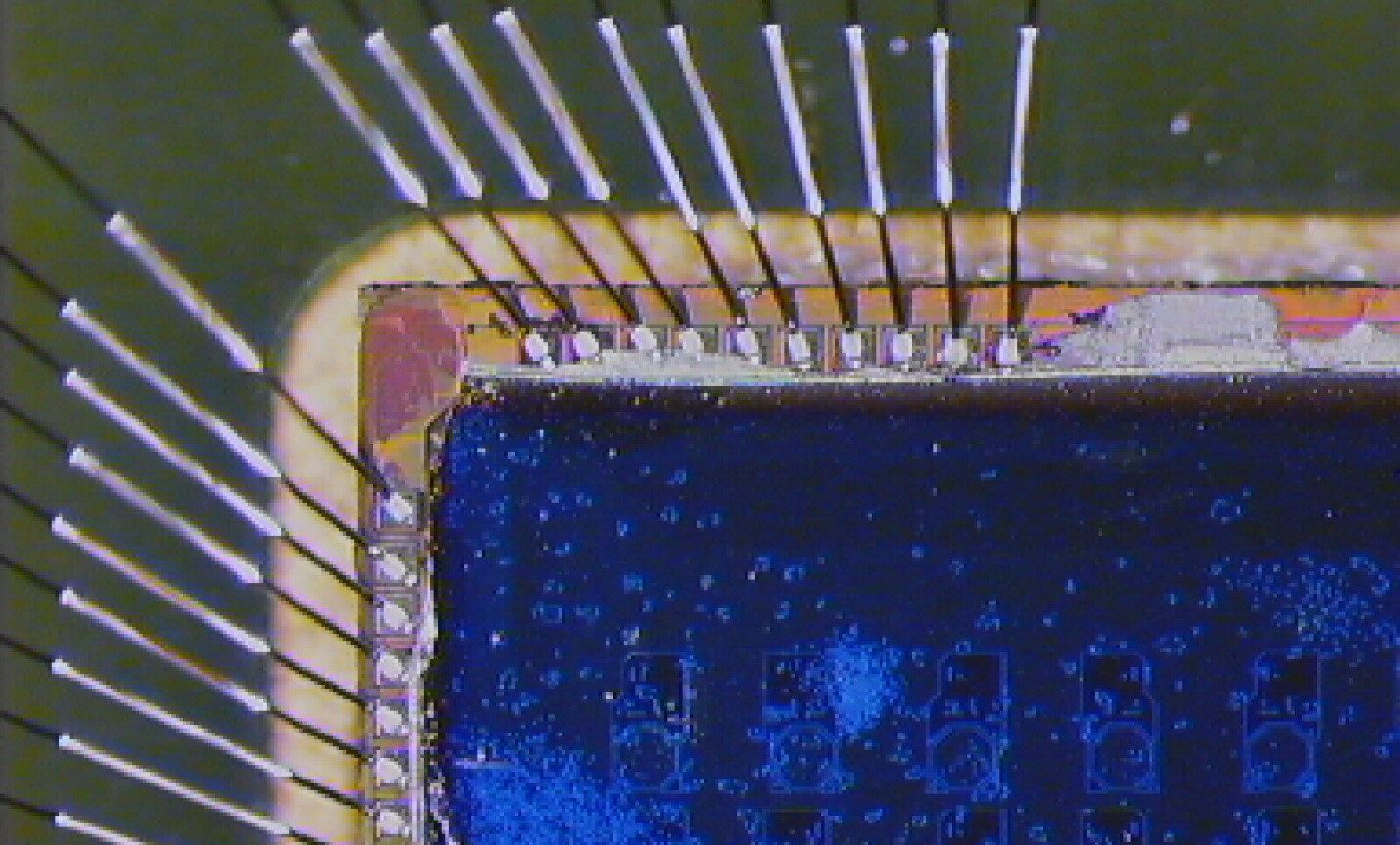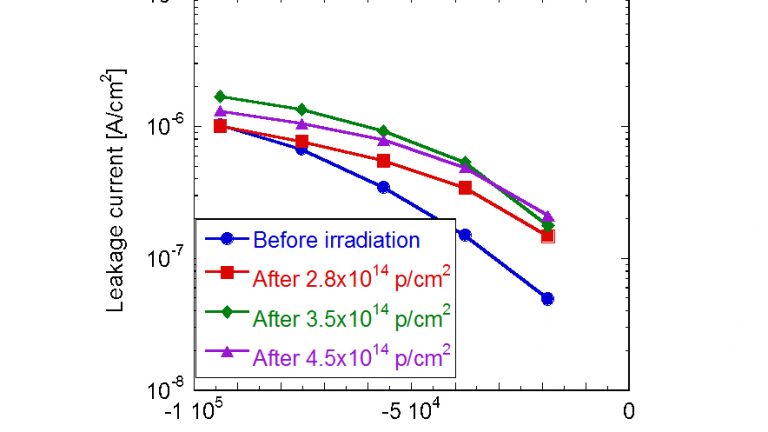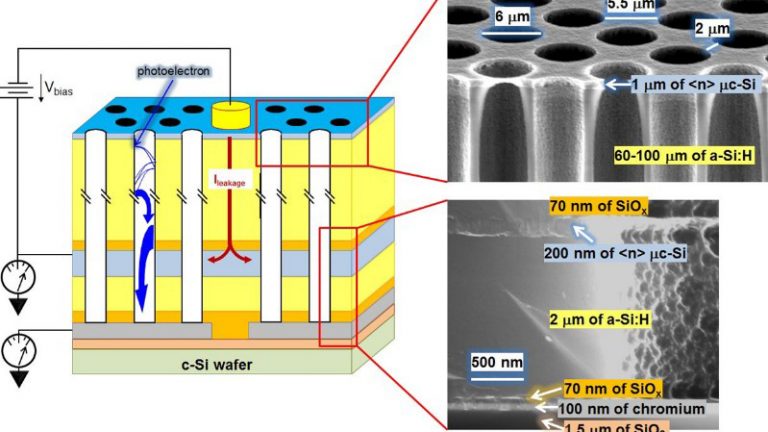Sensors


The disordered structure and the relatively high hydrogen content render a-Si:H very radiation hard. Thick a-Si:H diodes exposed to a proton beam of 24 GeV up to a fluence of ca. 1016 exhibited an increase a loss of their leakage current by a factor of 2 and fully recover with annealing at 100 for 24 hours. This material is therefore very attractive for the active layer of particle detectors.

a-Si:H diode diodes can be deposited directly on top of a readout electronics to create monolithic detectors for visible light imaging or particle tracking. Array of diodes are the defined by the electronic readout pads.

Microchannel plates (MCP) are vacuum-based electron multipliers for particle detection with applications ranging from image intensifiers to single-photon detectors. PV-Lab is developing MCP made of a-Si:H instead of lead glass. This new detector scheme should allow for monolithic integration with the readout electronics and minimal dead time.